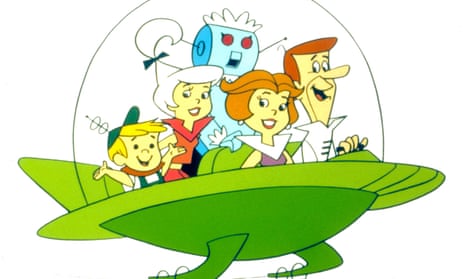The Trump administration unveiled its 2019 budget for Nasa on Monday, promising an outpost on the moon, “Jetson cars” and new attempts to cut funding for the international space station, earth science and astrophysics.
Robert Lightfoot, Nasa’s acting administrator, said on Monday that Nasa will move forward with plans to create a new space station around the moon, a base long called the Deep Space Gateway, but renamed the Lunar Orbit Platform-Gateway.
He said that Nasa aims to launch a power and propulsion module for the space station in 2022, as part of an ambitious return to the moon and to build a way station for deep space.
Lightfoot said Nasa was aiming to establish this new orbital foothold by 2030. “People from all walks of life,” he claimed, would be working on the moon and in space by that time.
“I’m confident the US will lead the way back to the moon, with humans working in lunar orbit, on the lunar surface, and in cislunar space [between the earth and the moon],” he said.
Lightfoot also spoke, without details, about ambitious Earth-bound projects for the next decade, including more advanced drones, a fleet of supersonic passenger planes, and “commercial urban air travel”.
“Yes, you’ll finally have your Jetson cars,” he said, alluding to the classic cartoon with flying cars, set in a retro future of 2062.
But most of those goals, if realized, would come long after the end of the Trump administration, which has allocated little of its budget for what Nasa needs to get into deep space. Only about $889m of the nearly $20bn budget is slated for a category called Advanced Exploration Systems.
Lightfoot instead stressed private-public partnerships, using hardware developed by companies like SpaceX. He congratulated SpaceX on its successful launch of a new, massive heavy rocket last week, saying that the agency is excited to use the new rocket even as it develops its own.
“We know how hard it is to get to first launch,” he said.
The budget also confirmed leaked excerpts that proposed to end funding of the International Space Station after 2024, allowing a transfer to private hands. Several senators have already opposed such a transfer.
The Trump administration has again tried to eliminate Nasa’s education program in the budget, to eliminate five earth science missions and has already moved to cancel Nasa’s Radiation Budget Instrument, a device that helps forecast weather and monitor heat in the atmosphere, but the new budget preserves about $1.8bn for Nasa’s overall earth science program.
The Trump administration also called for millions in cuts to astrophysics research, and a plan to eliminate WFIRST, a space telescope in design to study dark energy and planets outside the solar system.
David Spergel, an astrophysicist at Princeton University, said that the cuts imperil the standing of American research around the world. The US, he tweeted, “is abandoning its leadership in space astronomy”.
“What is driving the acceleration of the universe? What are the properties of exoplanet atmospheres? How did our galaxy and its neighbors form and evolve? What determines the architecture of exoplanets? US should be leading the world in addressing these big questions.”
Congress will ultimately decide how it wants to finance Nasa, and has a record of defying presidents over its funding. Although the agency enjoys bipartisan support, lawmakers and presidents have also proved reluctant to finance Nasa, letting its budget hover around $20bn in recent years – a stagnation that amounts to a budget cut, in context of inflation.
